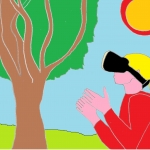- Notice: You must be logged in to view this area. Not registered? Sign up here!
What is Body Dysmorphic Disorder (BDD)?
Body Dysmorphic Disorder (BDD) is when a person becomes very preoccupied about a perceived flaw(s) in their appearance.
The media sometimes refer to BDD as ‘Imagined Ugliness Syndrome’ although for the person with BDD, the ugliness is very real. Sufferers of BDD can spend hours obsessing over the part of their appearance they’re unhappy with and engaging in behaviours to try and fix or hide their perceived flaw(s), such as staring at it the mirror, engaging in lengthy grooming activities before going out, avoiding going out in public or seeing loved ones, and even going to extremes like cosmetic surgery. In order to obtain a diagnosis of BDD, the symptoms must cause significant distress or impairment in social, school or living situations.
The degree to which people experience BDD varies so that some people will acknowledge that their distress is out of proportion while others might be firmly convinced that their defect is real and there is something very wrong with their appearance. People with BDD sometimes realise that others think their appearance is ‘normal’ and may have been told this many times. They may however distort these comments to fit in with their views, e.g. “They only say I’m normal to be nice to me” or “They say it to stop me being upset”. They may remember one critical comment about their appearance and dismiss 100 other comments that are neutral or complimentary.
BDD has a high rate of co-morbidity, which means that people diagnosed with the disorder are likely to have been diagnosed with another mental illness alongside BDD. The most commonly associated disorders are major depression, social phobia, obsessive compulsive disorder (OCD), alcohol/substance misuse, and eating disorders. It is important you are referred for an assessment with a mental health professional who can help determine whether you are suffering from BDD and/or any other mental health difficulties often associated with BDD. Getting the right diagnosis enables you to get the right treatment so you can start your recovery as soon as possible. The recommended treatment options for BDD are Cognitive Behaviour Therapy (CBT) and medication (Selective Serotonin Reuptake Inhibitors, SSRIs), which can be offered independently of each other or together.
A good first place to start in accessing diagnosis and treatment is to ask your GP to refer you to the adult Community Mental Health Team (CMHT) or the Children & Adolescence Mental Health Service (CAMHS) if you’re under 18. Your local mental health services would then offer an assessment of your difficulties and discuss treatment options with you.
Further support and information is also available from a number of charitable organisations, including OCD Youth, OCD Action or the BDD Foundation.
- Note: You must be logged in to post a comment.






